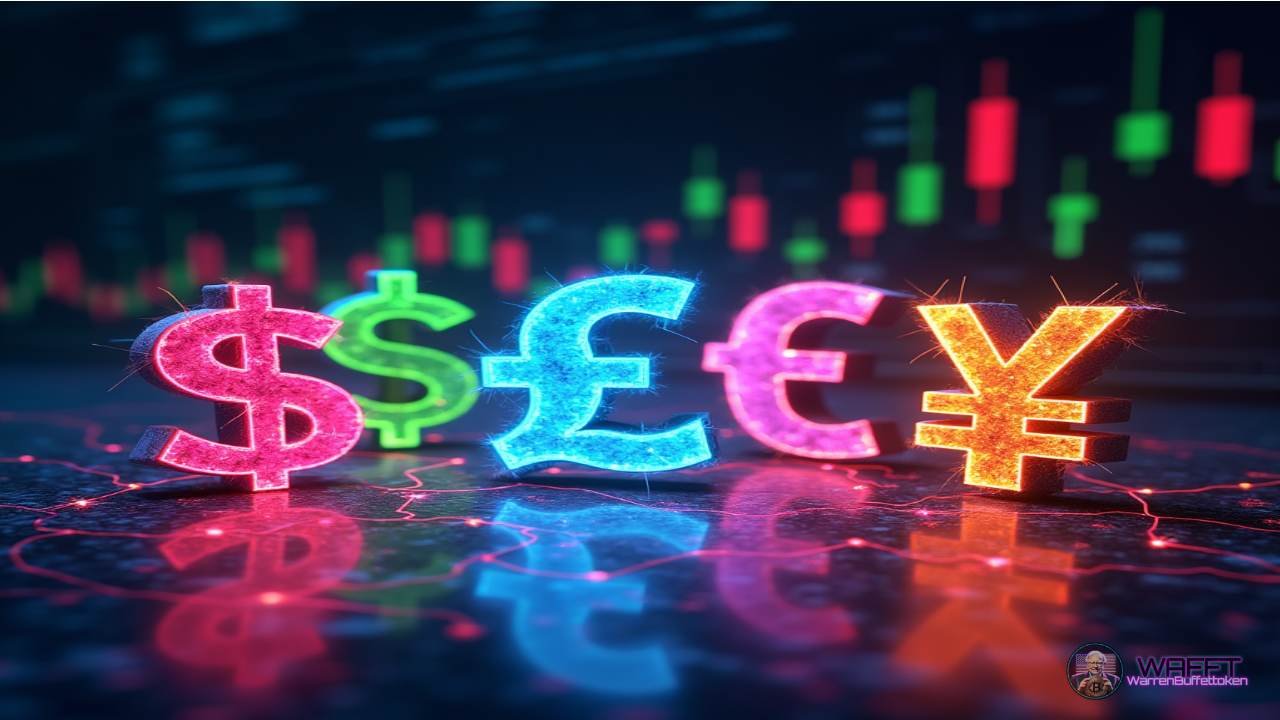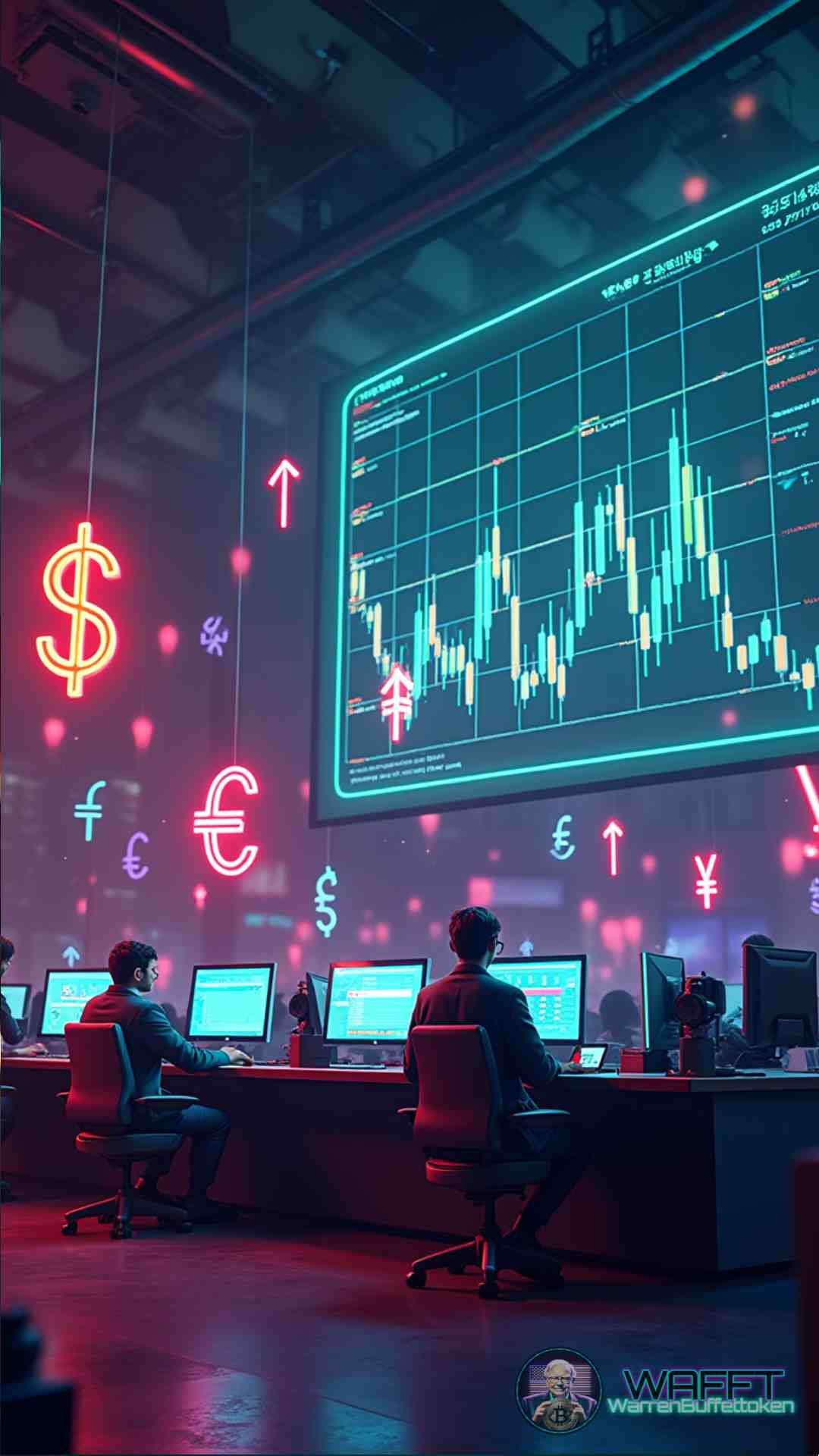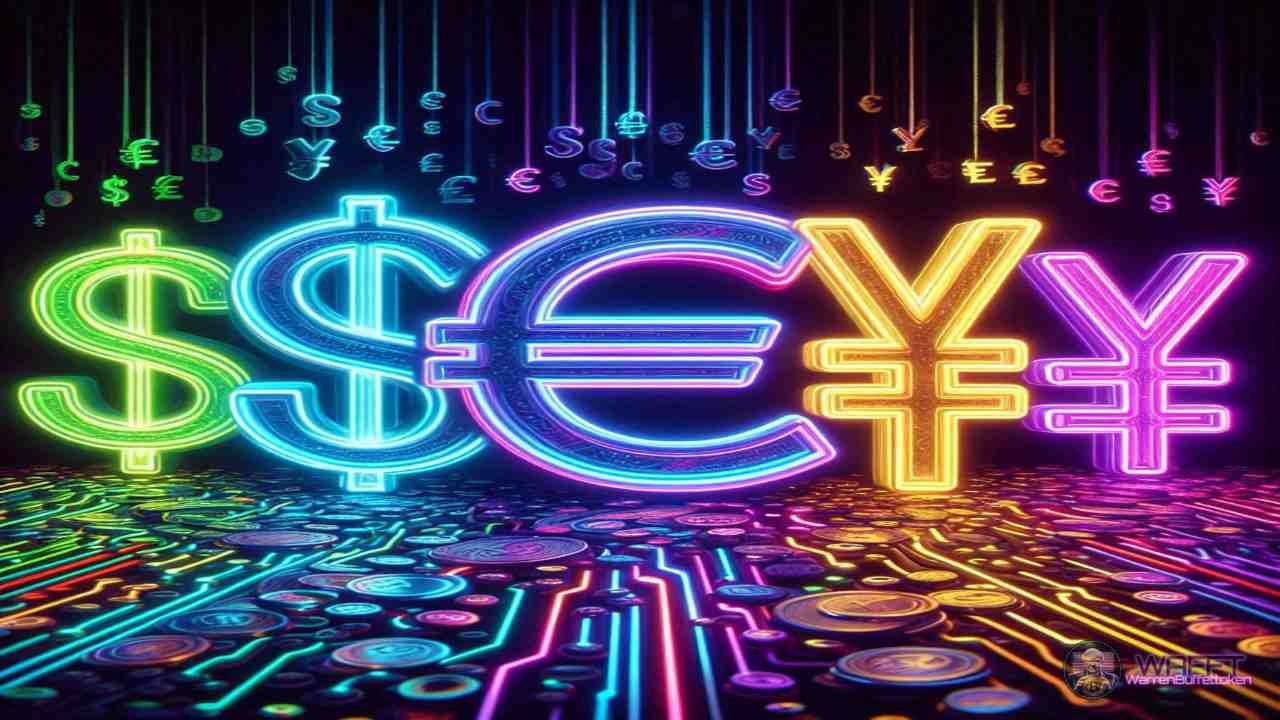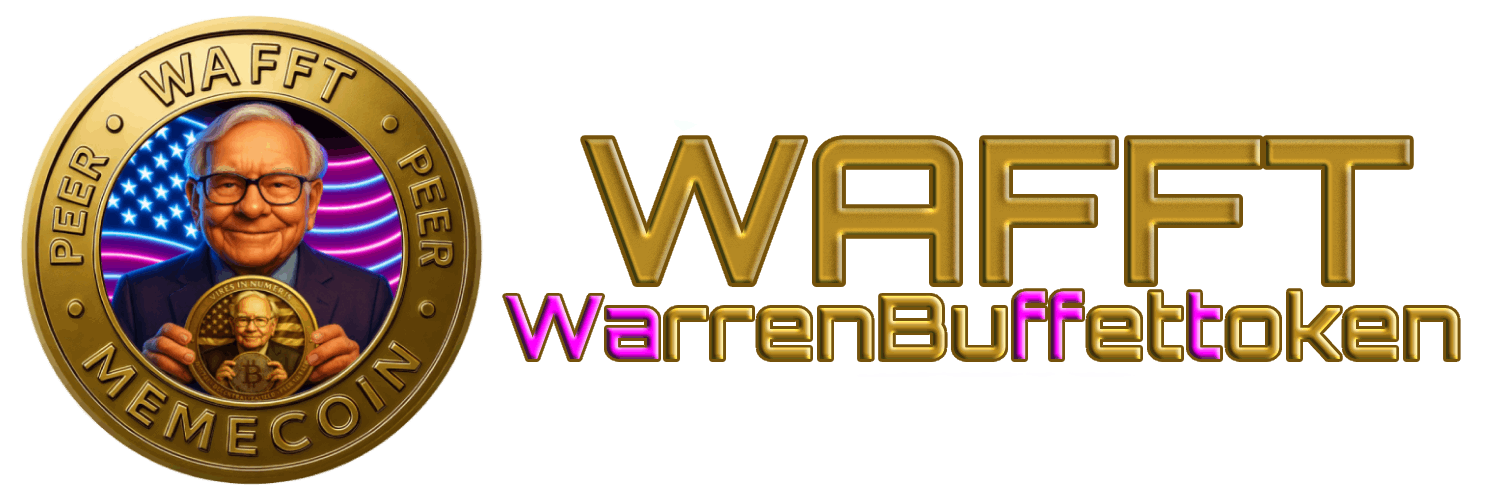Currencies:
Get ready to delve into the electrifying and often enigmatic world of currencies! 🌍💱 If you’ve ever traveled to another country, purchased something online from another continent, or simply watched the news, chances are you’ve heard of the dollar, the euro, or the yen. But what exactly are currencies and why are they so important in the global economy? This article will take you on a journey through everything you need to know about currencies, their history, how they work, and why they affect our lives more than you might imagine.
Buckle up because your journey through the foreign exchange markets begins here! 🚀

What is a currency? 💵💶💷
Let’s start with the basics. A currency is, quite simply, the currency of one country when used in another. Each country has its own monetary system (such as the dollar in the United States or the euro in the European Union), but when we talk about «currencies,» we’re usually referring to another country’s currency, especially in the context of international markets.
For example, if a Japanese tourist goes to Spain and pays with yen in a store in Madrid, they’re using a foreign currency. In short, the term currency is tied to international trade and cross-border transactions. Currencies allow countries, businesses, and people to purchase goods and services from other countries, regardless of borders.
Why are currencies so important? 🌐💱
Currencies are not only necessary for traveling and shopping in other countries, but they are the engine of global trade.
Here are some key points about their importance:
They facilitate international trade:
Without currencies, it would be very difficult to buy products or services from other countries. Imagine a Mexican company wants to buy technology from Germany. It would need to convert Mexican pesos into euros in order to make that purchase. This is where the currency markets come in.
Economic stability:
Currencies also play a crucial role in the economic stability of countries. Central banks manage their foreign exchange reserves to control inflation, stabilize the economy, and ensure that governments can pay their international debts.
Financial markets:
Currencies are central to global financial markets. Investors buy and sell currencies on a daily basis in what is called the Forex market (more on this in a moment), with the goal of profiting from changes in exchange rates.
A little history 🏛️
The use of currencies is not new. It has been around for centuries! But, like everything, it has evolved over time.
Let’s look at some of the most important milestones:
The Gold Standard (19th and 20th Centuries) 💰
A few centuries ago, many global economies used the gold standard. In this system, currencies were backed by gold, which meant that the value of a currency was tied to a specific amount of gold. Thus, currencies were also tied to the value of that precious metal. This helped maintain the stability of exchange rates between countries.
However, the gold standard began to fall apart during the world wars, when governments needed to print more money to fund their war efforts, which weakened the connection between gold and currencies. 🌍

The Bretton Woods System (1944-1971) 🏦
After World War II, the world needed to rebuild and stabilize its economies. This is where the Bretton Woods system comes in. This agreement established that the currencies of many countries would be tied to the US dollar, which in turn was backed by gold. The dollar became the world’s reserve currency.
But, in 1971, US President Richard Nixon made the historic decision to unlink the dollar from gold (goodbye to the gold standard), leading to a floating exchange rate system. Since then, currencies have fluctuated freely according to supply and demand in the markets.
Forex Market and Globalization🌐💻
Starting in the 1970s, with the elimination of the gold standard, the floating exchange rate system was born. This meant that currencies no longer had a fixed value, but their value rose and fell based on supply and demand in international markets. This led to the creation of the Forex (Foreign Exchange Market), which is today the largest financial market in the world, where currencies worth more than $6 trillion are exchanged daily. 🤯 Yes, you read that right, trillions!

The Forex Market: The Heart of Currency Trading 💱
What is Forex? 🤔
Forex, short for Foreign Exchange, is where the world’s currencies are bought and sold against each other. Did you know that this market moves around $6.6 trillion a day? 😱 That’s right, more money than you can imagine!
Think of Forex as a giant currency exchange where you can exchange dollars 💵 for euros 💶, Japanese yen ¥ for British pounds £, and any other combination of currencies you can think of. Best of all? You don’t need to travel to do it! Forex operates 24/7 globally and everything happens over the Internet.
How does this exchange work? 🔄
The basic logic is very simple: you buy a currency when you think it will go up in value 📈 and you sell it when you think it will go down 📉. Let’s say you have US dollars (USD) and you want to buy euros (EUR). If you think the euro is going to increase in value against the dollar, you buy euros. When the euro goes up in value (if you’re lucky 🤞), you sell them back to dollars and voilà! You’ve made some money.
But how do you know if a currency is going to go up or down? 🤨
This is where the magic of market analysis comes in ✨.
There are two main ways to predict currency movements:
Technical analysis 📊:
Uses charts, trends, and patterns to make predictions based on historical data.
Fundamental analysis 📰:
Examines economic news, central bank decisions, and political factors. For example, if a country has a strong economy or raises interest rates, its currency will likely strengthen 💪.
Who plays the Forex market? 🏦👩💼👨💻
Forex is played by all kinds of players, big and small.
Here are some examples:
Central banks 🏛️: They control interest rates and affect the value of currencies.
Commercial and investment banks 💼: They buy and sell currencies for themselves and their clients.
Multinational companies 🏢: They need to exchange money to do business in other countries.
Individual investors and traders 💻: People like you and me who are looking to make money by buying and selling currencies.
What are currency pairs? 👯
In Forex you are always buying one currency and selling another at the same time.
That’s why currencies are traded in pairs. Some popular pairs are:
EUR/USD: Euro vs. US dollar
GBP/USD: British pound vs. US dollar
USD/JPY: Dollar vs. Japanese Yen
The first value is the base currency and the second is the quote currency. For example, if the EUR/USD pair is at 1.10, it means that 1 Euro is worth 1.10 USD.
How do you make (or lose) money in Forex? 💰❌
Here comes the interesting part 😎. Imagine that you buy Euros (EUR) because you think they will rise in value against the US Dollar (USD). If you are right and the Euro rises, you can sell it at a higher price and earn the difference. But if you are wrong and the Euro falls… 😬 you lose money.
Quick example:
You buy 1,000 EUR at a rate of 1.10 (i.e. you pay $1,100 USD for those Euros).
After a while, the value of EUR/USD rises to 1.20. Great! 🎉
You sell your 1,000 EUR at that rate and receive $1,200 USD.
You have made $100 USD! 🤑
But the opposite can also happen. If the EUR/USD drops to 1.05, and you decide to sell, you would receive only $1,050 USD. 😩 You would lose $50.
Leverage? What is that? 🔧
Leverage is a super common tool in Forex. It allows you to control a huge amount of money with just a small deposit. For example, with 1:100 leverage, you can control $100,000 by investing just $1,000. Sounds amazing, right? 😎
But be careful! ⚠️ Leverage is a double-edged sword. If your trades go well, you can make a lot of money 💥, but if they go badly, you can also lose a lot. So use it responsibly.
Advantages of Forex 🎯
Great liquidity: You can buy or sell almost any amount without any problems.
24/7 access: The Forex market doesn’t sleep. You can trade at any time.
Low costs: You don’t need big commissions like in other financial markets.
Forex Risks ⚠️
High volatility: Prices can change quickly and without warning.
Leverage: Can increase both your profits and your losses.
Risk of losing everything: If you don’t have a good strategy, you can lose all your money in one bad move.
Conclusion 🏁
Forex is like a roller coaster 🎢. If you like the adrenaline rush and are willing to learn, it can be an exciting way to make money 💸. Just remember: get informed, practice with demo accounts, and above all, manage your risks well!
Do you dare to give it a try? 🤔 Welcome to the wild world of Forex!
Exchange Rates: Fixed vs. Floating 🌊⚖️
Today, countries primarily use two types of exchange rate regimes: fixed and floating. Let’s break them down.
Fixed Exchange Rate 🛠️
In a fixed exchange rate system, the value of a currency is tied to the value of another currency (usually the US dollar) or an asset such as gold. This provides stability and facilitates international trade. However, it can limit the government’s ability to manage its own economic policy.
A classic example of a fixed exchange rate is the Chinese currency, the yuan, which was long pegged to the US dollar.
Floating Exchange Rate 🌊
In floating exchange rate systems, the value of a currency is determined by supply and demand in international markets. Most developed economies (such as the US, Japan, and the European Union) use this system.
This means that the value of a currency can fluctuate rapidly due to global events, economic decisions or even natural disasters. It is a much more flexible system, but also with a higher risk of volatility.

The Most Powerful Currencies in the World 🏆💶💴
Although there are hundreds of currencies in the world, some are much more influential than others on the international stage.
Here are the five most important currencies:
💵 US Dollar (USD)
The king of kings in the world of currencies. It is used almost everywhere and is the currency you see most in international transactions. Did you know that more than 60% of global reserves are in dollars? If we talk about international trade or investments, the dollar is the «boss.» 👑 It is the reference currency, and even cryptocurrencies like Bitcoin are compared to it. So, when the dollar sneezes, the entire financial world catches a cold! 🤧
💶 Euro (EUR)
The official currency of the European Union 🏛️, and the second most important in the world. Although it is young (it was born in 1999), it has muscle. The euro is present in many international reserves and is used by 19 European countries. Also, if you travel around Europe, it is the golden ticket 🏖️, because almost everyone accepts it. It is like the dollar, but with a European accent. 😉
💴 Japanese Yen (JPY)
This is the samurai of currencies 🗡️. The Japanese Yen is the third most traded currency and is famous for being a safe haven when the world turns upside down. If there is economic or political instability, many investors run to the Yen, seeking protection. Japan is an economic powerhouse and the Yen reflects this.
💷 British Pound (GBP)
The British Pound is the granddaddy of currencies 🧓, having been in circulation for centuries. Despite the ups and downs of Brexit, it remains one of the strongest currencies. The UK has a lot of financial influence globally, especially through London, which remains a nerve centre of global finance. God save the pound! 🏴
🇨🇭 Swiss Franc (CHF)
Looking for stability? The Swiss Franc is your choice! 🏔️ Switzerland is known for its neutrality, its steel banking system and of course its currency. During crises, when everything seems to be falling apart, the Swiss franc remains strong. Many investors see it as a «safe haven» when financial waters are rough. 🌊
🇨🇦 Canadian dollar (CAD)
The “loonie” (nickname for the Canadian dollar, inspired by the bird that appears on the coins) 🦆 is the currency of one of the richest countries in natural resources. Canada has large reserves of oil, metals and timber, and its currency is closely linked to these markets. So, when oil goes up or down, the Canadian dollar feels it. A real wild card in the currency market! 🃏
🇦🇺 Australian dollar (AUD)
The Australian dollar is a key player in the Asia–Pacific region 🏄♂️. Australia also has an economy based on raw materials, such as coal and metals, so the AUD is highly influenced by the prices of these resources. In addition, it is one of the favorite currencies of traders due to its volatility. Surfing with the Australian dollar can be very exciting! 🌊🏄♀️
🇨🇳 Chinese Yuan (CNY)
Watch out, here comes the Asian giant! 🐉 Although the yuan is not yet fully convertible (China controls it a lot), it has gained weight in the global economy. With the impressive growth of China as a world power, its currency has begun to play in the big leagues. More and more countries accept yuan and companies do business in this currency. If this continues, the yuan could be the next big competitor in the global arena. 💥
There you have it: a quick look at the currencies that move the world. 🌐 These currencies not only represent powerful economies, but are also key to trade, investment
Factors that affect currencies 📉📈
Exchange rates between currencies are constantly moving, like a financial roller coaster 🎢. These changes are not random, but are driven by a number of key factors that influence the relative value of each currency. Let’s take a closer look at them!
🏦 Monetary policy
One of the most important factors is a country’s monetary policy, which is in the hands of central banks (such as the Federal Reserve in the US or the European Central Bank). When central banks raise or lower interest rates, they affect the value of their currencies.
High interest rates:
Imagine that interest rates are high in a country. This attracts investors because they get better returns on their money, which causes demand for that currency to increase, and with it, its value. 💵⬆️
Low interest rates:
Conversely, when interest rates fall, the currency becomes less attractive to investors, and its value may fall. Central banks often lower rates to boost economic growth, although this can weaken the currency. 📉
Interesting fact:
Central banks also use other tools such as buying or selling assets (known as “Quantitative Easing” or “QE”) to influence the money supply, which can indirectly impact the currency.
🏛️ Political stability
A politically stable country is often a magnet for foreign investors, which strengthens its currency. Trust in a country’s political system and economic institutions is key to making its currency attractive.
Political or social instability:
Political crises, conflicts or uncertainty, for example during elections or changes of government, can generate distrust among investors. As a result, they flee the country, selling the currency and causing its devaluation. This has happened in emerging economies, where coups or mass protests caused sharp falls in their currencies.
Example:
In 2016, the Brexit referendum caused the British pound (GBP) to fall sharply due to uncertainty about the UK’s future relationship with the European Union. Political instability created distrust and the currency suffered the consequences. 📉🇬🇧
📈 Inflation
Inflation is another critical factor that influences the value of a currency. A country with high inflation will see its currency lose value against others, as goods and services become more expensive and less competitive internationally.

High inflation:
When prices rise too quickly, the purchasing power of the currency decreases. This erodes confidence in the currency, as people prefer to hold their assets in more stable currencies.
Low inflation:
Controlled or moderate inflation is a sign of economic stability. Investors prefer currencies from countries with low inflation, as they offer greater preservation of value over time.
Notable example:
During the 2000s, Zimbabwe experienced extreme hyperinflation, printing 100 trillion Zimbabwean dollar bills. This caused its currency to become virtually worthless. 😱💸
💰 Trade balance
Foreign trade also plays a key role in the value of currencies. When a country exports more than it imports, its currency tends to strengthen as demand for its currency increases.
Trade surplus:
If a country sells more products abroad (exports) than it buys (imports), its trading partners need to buy its currency to pay for those products, which drives up its value. 🌍📈
Trade deficit:
Conversely, if a country imports more than it exports, it is spending more than it receives, which can weaken its currency. This imbalance can cause demand for its currency to fall.
Interesting fact:
Countries like Germany and Japan, with large trade surpluses, have seen their currencies tend to appreciate due to high demand for their products in the global market.
💼 Foreign direct investment (FDI)
Foreign investment in a country also influences the value of its currency. When foreign companies or governments invest in a nation, they need to buy its local currency to carry out their investments.
High investment:
If a country receives large inflows of foreign capital (for factories, infrastructure, etc.), its currency will strengthen, as the demand for the currency increases.
Withdrawal of investments:
If, on the other hand, investors decide to withdraw their capital for some reason (economic crisis, unfavorable policies, etc.), the currency may suffer a fall due to the decrease in demand for the currency.
🌍 Global factors
We cannot forget that currencies do not only depend on internal factors, but are also affected by the global environment. The world economy, oil prices, international trade, and economic policy decisions in large countries such as the US or China influence the value of currencies worldwide.
Global crises:
Events such as the 2008 financial crisis or the COVID-19 pandemic in 2020 led to drastic changes in the foreign exchange markets. In such situations, investors tend to look for safe haven currencies such as the US dollar or Swiss franc.
Commodity prices:
For economies based on commodity exports, such as Canada or Australia, the prices of resources such as oil, minerals or agricultural products have a direct impact on the value of their currencies. When the prices of these products rise, the currencies of these countries tend to strengthen. 🌾⛏️

In short, currencies are like ships in a rough sea. 🌊 They are subject to the tides of monetary policy, political stability, inflation, trade and investment flows. Understanding these factors is key to navigating the world of currency trading and the global economy.
The future of currencies: digitalization and cryptocurrencies 💻🔮
The future of currencies is clearly linked to technology. We have already seen the rise of cryptocurrencies such as Bitcoin and Ethereum, which seek to challenge the monopoly of traditional currencies. Although these cryptocurrencies still face significant obstacles, such as regulation and mass acceptance, their impact on financial systems and international trade cannot be ignored.
In addition, central banks around the world are exploring the creation of official digital currencies, known as CBDCs (Central Bank Digital Currency). These new forms of money could revolutionize the way we use and understand currencies, eliminating intermediaries and making transactions faster and safer.
Conclusion 🌍💱
Currencies are the beating heart of international trade and global economies. From gold bartering to digital Forex exchanges, currencies have evolved in impressive ways. With the rise of cryptocurrencies and the digitalization of money, we’re seeing how the future of currencies could change more in the coming decades than it has in the past few centuries.
Whether you’re planning a trip, investing, or simply shopping online, currencies will always be present in our daily lives. So, the next time you see an exchange rate, you’ll know that you’re looking at the result of centuries of economic evolution. 🌟


